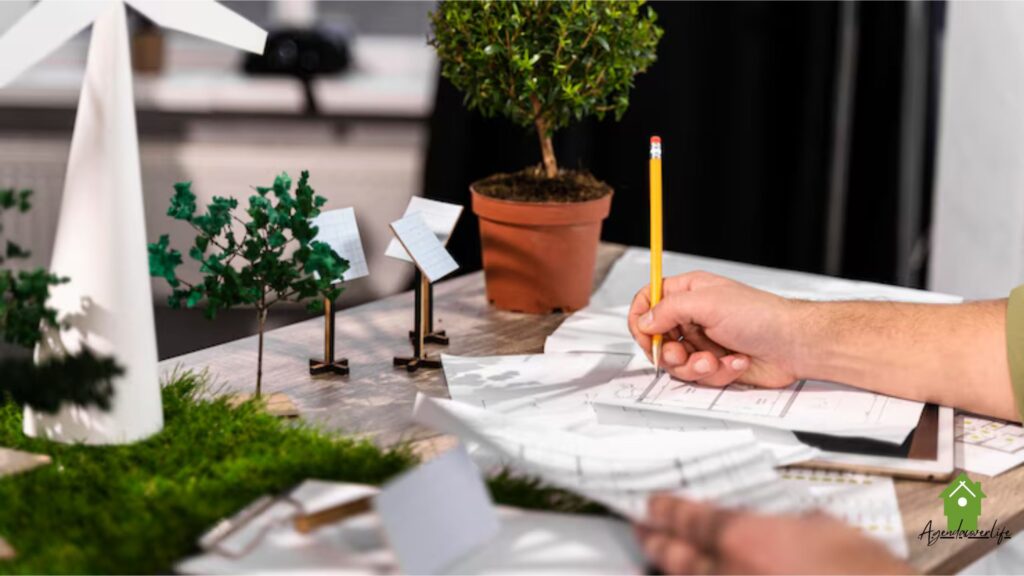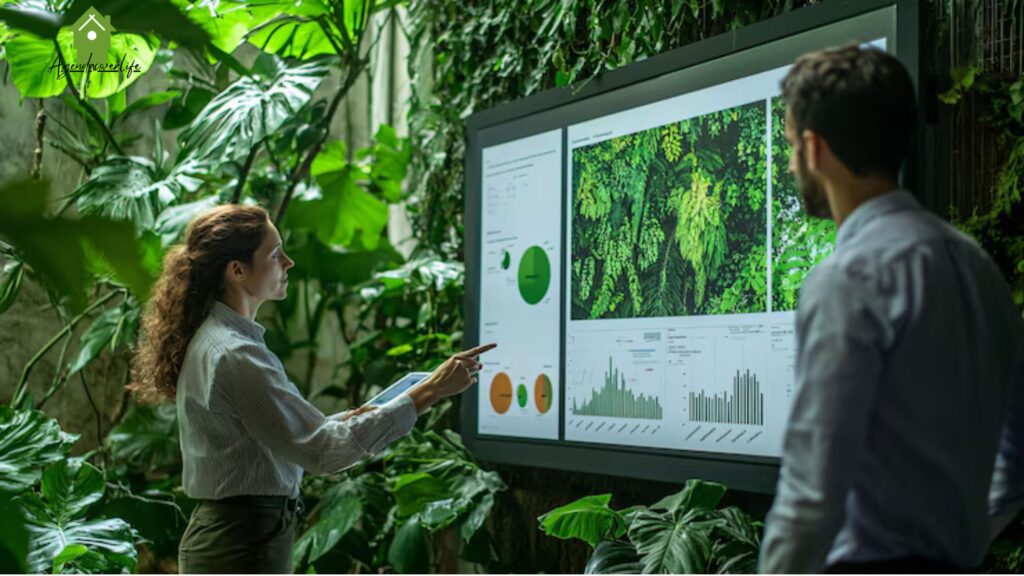
Imagine designing the perfect outdoor space without lifting a shovel or planting a single seed until you’re absolutely sure of the final layout. Landscaping virtualization management lets you do just that! With the help of modern technology, visualizing and planning your dream backyard, garden, or even expansive park has never been so efficient, creative, and resource-saving.

Curious about what landscaping virtualization management is and why it’s becoming the go-to solution for homeowners and professionals? Whether you’re exploring outdoor design for the first time or looking to upgrade how you manage your projects, this guide dives into the benefits of virtualization and how to make it work for you.
What Is Landscaping Virtualization Management?
Think of landscaping virtualization management as the crossover between landscaping and computer-assisted design. At its core, it involves using specialized software to plan, visualize, and manage outdoor spaces. Instead of working on sketches or jumping straight into physical landscaping, this approach allows you to design every square inch of your landscape virtually before any work begins.
Picture this scenario: you want to add a pond, several flower beds, and some trees to your backyard. Rather than guessing how everything will look, landscaping virtualization software lets you place those features digitally on a 3D model of your space. You can try different layouts, test various plant placements, or even experiment with materials for patios–all without any real-world commitment.
Why Use Landscaping Virtualization Management?
Using virtualization to design and manage outdoor spaces isn’t just about convenience. It’s about improving efficiency, reducing mistakes, and maximizing creativity. Here are some top reasons why it’s worth adopting this approach:
1. Visualize Before You Commit
With virtualization, you can see your ideas in action before applying them in real life. Whether it’s testing out a new pathway design or making sure your plants will have enough sunlight, a virtual model helps remove guesswork. No more regretting permanent changes down the line!
2. Save Time and Money
Redoing physical work can be costly and frustrating. Virtualization helps you sit back and plan meticulously first. For instance, you won’t need trial-and-error results for plant selection, material purchases, or structural layouts since your entire project can play out on your device.
3. Sustainable Landscaping
The environment benefits from thoughtful landscaping, and proper planning through virtualization makes sustainability much easier. For example, tools can calculate water use, sun exposure, and energy requirements, so you can design energy-efficient and eco-friendly outdoor spaces.
4. Customization Without Limits
Want to add a fountain, change the type of grass, or even tweak the slope of your backyard? These programs enable endless adjustments without significant effort. It gives everyday homeowners an opportunity to explore high-level customizations like professionals.
5. Track and Manage Maintenance
Virtualization isn’t just for design; it’s also an excellent way to manage ongoing landscaping care. Built-in task reminders, water usage trackers, and even pest prevention features ensure your green spaces thrive long after the initial layout.
Popular Tools in Landscaping Virtualization Management
If you’re ready to try this tech-driven approach, there’s good news–modern tools make landscaping virtualization accessible, even if you don’t have a design background. Here are some software options to check out:
1. SketchUp
This user-friendly 3D design software is perfect for detailed landscaping models. You can create layouts, test geometric designs, and even layer various features like patios, water features, and gardens.

2. Realtime Landscaping Pro
Tailored for both beginners and professionals, Realtime Landscaping Pro allows you to create full-color, realistic 3D renderings of outdoor spaces. It also provides extensive libraries of plants, architectural features, and materials to play with.
3. Garden Planner
This lightweight and easy-to-use tool specializes in simplified landscaping projects. Whether you’re working on a vegetable garden or flower arrangement, it’s intuitive and gets the job done.
4. AutoCAD Civil 3D
For large-scale professional projects, this tool is a dream come true. It’s packed with advanced tools for grading, drainage solutions, and complex layouts.
5. Arborgold
For landscaping management, this tool is ideal for businesses. It helps track ongoing maintenance tasks, supply orders, and even customer relationships.
Tips for Implementing Landscaping Virtualization Management

If you’re excited to adopt landscaping virtualization into your next project, here are some tips to get started effectively:
1. Start with Measurements
A successful virtual model begins with accurate measurements of your outdoor area. Use tools like measurement apps, tape measures, or even drones to map your property precisely.
2. Be Clear About Your Vision
Before you start mapping out plants and patios, think about what you want your landscape to achieve. Is it relaxation? Entertainment? Sustainability? Clear goals help you make better design decisions.
3. Use Pre-Built Objects
Most software comes with ready-made features like trees, benches, or lights. Mix and match these for inspiration before moving forward with customization.
4. Experiment Freely
One of the major perks of virtualization is trial and error! Whether you want to test water features or play with elevation changes, take your time to explore different setups.
5. Partner with Professionals When Needed
While virtualization tools make designing simple, it’s always a good idea to consult landscapers or contractors for large-scale projects. They can offer insights into practicalities and make sure your designs can become a reality smoothly.
How Landscaping Virtualization Saves Resources

One big advantage of using landscaping virtualization is how much waste and resources it saves in the long run. Here’s how:
- Eliminating Mistakes: For example, placing a tree virtually ensures that you won’t accidentally put it in a spot with poor sunlight or too close to your foundation.
- Efficient Use of Space: Virtual models can show you the most efficient yard layouts to maximize both green areas and pathways.
- Eco-Friendly Choices: Many tools calculate water needs, energy savings, and even offer suggestions for native plants that require less maintenance and resources.
Inspiring Real-Life Examples
Example 1: Backyard Makeover on a Budget
Christine had always wanted a cozy backyard for family gatherings but didn’t want to overspend. Using Garden Planner, she visualized every detail, from stone pathways to flower placements, helping her plan her entire layout with minimal waste.
Example 2: Professional Park Design
A local landscaping firm used Realtime Landscaping to design a city park with walking trails, a picnic area, and eco-friendly zones. Thanks to virtualization, they finished the project under budget and avoided countless potential missteps early on.
FAQ Section
Q1. Can virtualization software be used for small-scale projects like gardening?
Absolutely! Even small projects like vegetable gardens or flower beds can benefit from tools like Garden Planner or Realtime Landscaping.
Q2. Do you need professional training to use landscaping software?
Not at all. Many programs are designed with user-friendly features, perfect for beginners. However, for complex layouts, some advanced training can help.
Q3. Is this software expensive?
There are tools for every budget! While professional-grade software can get pricy, simpler options (or even free ones like SketchUp Free) are widely available.
Q4. How does landscaping virtualization help with maintenance?
Many tools include management features, such as tracking plant health, scheduling watering systems, and planning seasonal changes.
Q5. Can I use this approach for commercial landscaping projects?
Of course! Programs like AutoCAD Civil 3D and Arborgold are specifically tailored for business and large-scale landscaping needs.
Final Thoughts
Landscaping virtualization management is more than just a fancy buzzword. It’s a practical, powerful way to blend creativity, precision, and efficiency in outdoor design. Whether you’re transforming your backyard or overseeing city-scale green spaces, this technology lets you plan smarter and make informed choices without committing to irreversible changes.
Why wait for guesswork to chew into your time, money, and energy? Start exploring the world of virtual landscaping tools today and witness how they can revolutionize the way you create and manage outdoor spaces!
Author’s Recomendations
Transform Your Outdoor Spaces with Horizon Landscape
Landscape vs. Portrait Orientation: Choosing the Right Format









